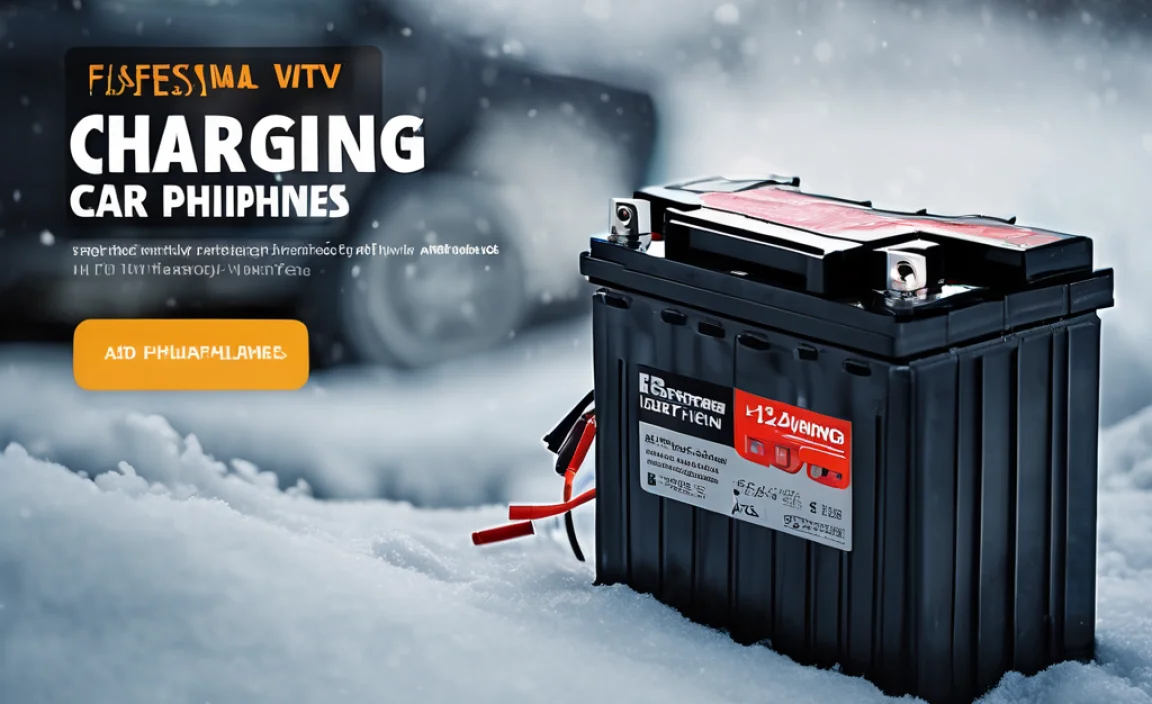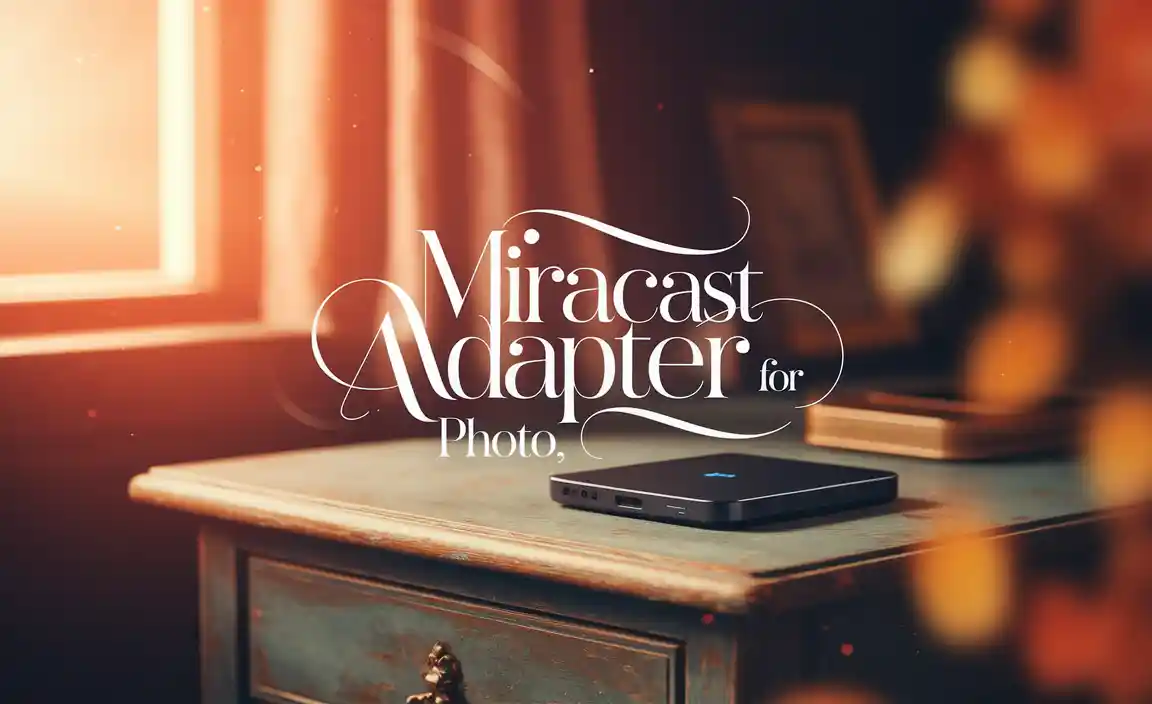Quick Summary:
An adapter for your record player isn’t just a small accessory; it’s often an essential upgrade that can dramatically improve your listening experience. It ensures proper connection and signal transfer, unlocking better sound quality and preventing damage to your vinyl and equipment. Choosing the right one is key to enjoying your music to its fullest.
Choosing the Right Adapter for Your Record Player: An Essential Upgrade Guide
Struggling with how to connect your record player, or perhaps noticing a less-than-perfect sound? Don’t worry, it’s a common hurdle for vinyl lovers! Sometimes, the simplest solution is the most important. An adapter can be the missing piece of the puzzle, ensuring your turntable sings its best tune. We’ll walk you through why an adapter is so vital and how to pick the perfect one, making your vinyl journey a smooth one from start to finish. Get ready to hear your records like never before!
What is a Record Player Adapter and Why Do You Need One?
Think of an adapter as a trusty connector, a bridge between your valuable record player and the rest of your audio setup. It helps ensure that the delicate audio signal from your turntable gets to your amplifier or speakers cleanly and without any fuss. Without the right adapter, you might experience poor sound, hum, or even damage to your equipment or precious vinyl. It’s all about making sure the electricity carrying the music from your record groove makes it to your ears properly.
Common Connection Puzzles
Record players often use specific types of connectors that might not match what your modern stereo system expects. For instance, many older turntables have a special “phono” output with a small ground wire. Your amplifier might have a dedicated “phono input” for this, but if it doesn’t, or if you’re using newer powered speakers, you’ll need an adapter to bridge that gap. This is where the magic of a simple adapter comes in!
Different Types of Record Player Adapters
When we talk about “adapters” for record players, we’re usually referring to one of a few main types of items that help with connections or signal handling. It’s important to know which one you might need.
1. RCA Cable Adapters and Splitters
Most record players output their sound through RCA cables, which are those common red and white (or red and black) connectors. Sometimes, you might need to split this signal or adapt it to a different type of connection. For example, if your audio receiver or mixer has only one set of RCA inputs but you want to connect two sources, an RCA splitter might be useful. Or, if you have a turntable with a special DIN connector (less common these days), an adapter would convert it to the more universal RCA.
2. Ground Wire Adapters and Extensions
A crucial part of a record player’s setup is the ground wire. This thin wire helps to reduce or eliminate a persistent humming sound that can sometimes interfere with your music. If the ground wire on your turntable is too short to reach your amplifier’s ground screw, a ground wire extension adapter is your best friend. Without a proper ground connection, that annoying hum can really detract from the listening experience.
3. USB Adapters for Digital Recording
Some modern record players come with a built-in USB output, allowing you to connect them directly to a computer and digitize your vinyl collection. If your existing turntable doesn’t have this feature, but you want to record your records digitally, you can get a separate USB phono preamplifier or an analog-to-digital converter. This device takes the analog signal from your turntable and converts it into a digital format that your computer can understand.
4. Phono Preamp Adapters (or Built-in Preamps)
This is a big one! Most turntables output a very weak signal (called a “phono level” signal) that needs to be boosted and equalized before it can be played through a standard amplifier or powered speakers. This job is done by a phono preamplifier, often called a “phono stage.”
- Built-in Preamps: Many modern turntables have a phono preamp built right into them. If yours does, it likely has a switch on the back that lets you choose between “PHONO” (for traditional phono inputs on an amp) and “LINE” (for connecting to regular AUX or CD inputs on any amp or powered speakers).
- External Preamps: If your turntable doesn’t have a built-in preamp (or if you want to upgrade to a better one), you’ll need an external phono preamp. This is a small box that sits between your turntable and your amplifier. The turntable connects to the preamp, and the preamp connects to your amplifier.
- Adapters as Workarounds: Sometimes, people refer to using a phono preamp as getting an “adapter” because it adapts the turntable’s low-level phono signal to a line-level signal that the rest of your audio gear can use. If your amplifier has a “PHONO” input, it already has a built-in phono preamp, and you don’t need an external one.
When an Adapter is Not Just an Option, But a Necessity
Using the right adapter is crucial for a few key reasons, all centered around getting the best sound and protecting your gear:
- Signal Strength: As mentioned, the raw signal from a turntable (“phono level”) is very low. Amplifiers expect a stronger signal (“line level”). An adapter, often in the form of a phono preamp, boosts this signal correctly.
- Impedance Matching and EQ: The RIAA equalization curve is a standard used in vinyl recording that boosts bass and cuts treble on cutting and boosts treble and cuts bass on playback. A phono preamp ensures this equalization is applied correctly, giving you a balanced and natural sound. Without it, your music will sound tinny or muffled.
- Hum Reduction: Ground loops can cause an annoying 60Hz hum. A proper ground connection, sometimes facilitated by a specific adapter or extension, is essential for a clean signal. A good ground wire connects to the turntable’s chassis and the ground terminal on your amplifier.
- Connector Compatibility: Sometimes, simple physical connection adapters are needed if your turntable has an older or less common plug type that doesn’t match your modern audio inputs.
Let’s dive into how to figure out what you need.
Diagnosing Your Record Player Setup: What Adapter Do You Need?
Before you buy anything, let’s do a quick check of your current setup. This will save you time and money!
Step 1: Identify Your Record Player’s Outputs
Take a look at the back of your record player. What kind of connectors do you see?
- RCA Jacks: These are the most common. You’ll typically see a pair of red and white (or red and black) female jacks.
- Ground Screw: There might be a small screw terminal, usually green or brass, with a wire coming from your turntable to connect to it.
- USB Port: Some newer turntables have a rectangular USB port.
- Other Ports: Less common might be other types of connectors.
Step 2: Examine Your Amplifier or Speakers’ Inputs
Now, look at the back of your amplifier, receiver, or powered speakers. What kinds of inputs do they have?
- “PHONO” Input: This is the key. If you see a pair of RCA jacks specifically labeled “PHONO,” and it often has a ground screw nearby, your system likely expects a direct phono signal from the turntable.
- “LINE,” “AUX,” “CD,” “TAPE” Inputs: These are standard RCA inputs. They expect a “line-level” signal, not the raw “phono-level” signal.
- USB Input: If you plan to record your vinyl to a computer.
- No PHONO Input: This is very common on modern receivers or if you’re using powered speakers directly.
Step 3: Listen Critically!
Connect your turntable as it is. Play a record. What do you hear?
- Very Quiet, Thin Sound: This is the biggest clue you need a phono preamp (or your turntable’s built-in one isn’t set correctly). The “PHONO” signal isn’t being properly amplified and equalized.
- Persistent Hum or Buzz: This often points to a grounding issue. Your ground wire might be too short or not making a good connection.
- Good Sound: If you’re already getting clear, balanced sound, you might not need any adapters!
Step 4: Check Your Turntable’s Switch (If Applicable)
If your turntable has RCA outputs and a switch on the back, try toggling it. Often, it will say something like “PHONO / LINE”.
- If you have a “PHONO” input on your amp and a ground screw: Try setting the switch to “PHONO” and connect both RCA cables and the ground wire directly to your amplifier.
- If you don’t have a “PHONO” input on your amp, or if you want to use a different input (like AUX): Set the switch to “LINE” and connect the RCA cables to any available line-level input (AUX, CD, etc.). You still need to ensure proper grounding.
If, after these steps, you realize you’re getting quiet, thin sound, or a hum, you likely need an adapter of some kind – most commonly, a phono preamp or a grounding solution.
The Most Common Adapter You Might Need: The Phono Preamp
For most setups lacking a dedicated “PHONO” input on the amplifier, a phono preamp is the essential “adapter” you need. It takes the weak, unequalized signal from your turntable and turns it into a robust, equalized “line-level” signal that any standard audio input can handle beautifully.
What to Look For in a Phono Preamp
Phono preamps come in all shapes and sizes, from tiny matchbox units to larger, more elaborate boxes. Here’s what matters for beginners:
- Compatibility: Make sure it’s designed for “Moving Magnet” (MM) cartridges, as these are the most common type found on budget and mid-range turntables. If you have a more advanced turntable, you might have a “Moving Coil” (MC) cartridge, which requires a different type of preamp.
- Inputs/Outputs: It needs RCA inputs to connect your turntable and RCA outputs to connect to your amplifier.
- Ground Terminal: A good preamp will have a ground terminal to connect your turntable’s ground wire. This is crucial for eliminating hum.
- Power Source: Most need a small power adapter (included) to plug into the wall.
- Ease of Use: Simple is best for beginners.
How to Connect a Phono Preamp
This is where it feels like a true adapter! The process is straightforward:
- Power Off: Always turn off your amplifier and unplug your turntable before making any connections.
- Connect Turntable to Preamp:
- Plug the RCA cables from your turntable into the “INPUT” or “IN” RCA jacks on the phono preamp.
- Connect the ground wire from your turntable to the ground screw (often labeled “GND” or with a ground symbol) on the phono preamp.
- Connect Preamp to Amplifier:
- Plug a new set of RCA cables from the “OUTPUT” or “OUT” RCA jacks on the phono preamp into any available LINE-LEVEL input (like AUX, CD, or TAPE) on your amplifier or powered speakers.
- Connect Power: Plug the power adapter for the phono preamp into the wall and then into the preamp.
- Power Up: Turn on your amplifier first, then your turntable.
- Test: Select the input on your amplifier where you connected the preamp and play a record. You should now have clear, full-range sound!
If you still hear hum, double-check your ground connections. Make sure the ground wire is securely attached to both the preamp and the turntable. Sometimes, the issue is with the power outlets themselves, and using a power strip designed to isolate your audio gear can help.
Dealing with Grounding Issues: Hum Eliminator Adapters
The dreaded turntable hum! It’s like a mosquito buzzing in your ear while you’re trying to enjoy a beautiful melody. This hum is usually caused by a “ground loop” or simply an inadequate ground connection for your turntable. The ground wire prevents stray electrical currents from being picked up and amplified by your system, which would otherwise manifest as an audible hum.
What Causes Hum?
Several things can lead to a hum:
- Short Ground Wire: The most common issue is that the turntable’s built-in ground wire is too short to reach the ground terminal on your amplifier or phono preamp.
- No Ground Terminal: Some modern amplifiers or powered speakers might not have a dedicated ground terminal for a turntable.
- Poor Connections: Loose screws or corroded connectors can also cause issues.
- Electrical Interference: Sometimes, nearby electronics can induce interference.
Solutions and “Adapters” for Hum
You don’t always need a fancy “hum eliminator” device. Often, simple solutions work best. These can be considered “adapters” in the sense they adapt your setup to overcome the issue.
1. Ground Wire Extensions
If your ground wire is just too short, the simplest solution is a ground wire extension. This is essentially a short length of wire with appropriate connectors (often spade terminals or bare wire ends) that you’ll use to lengthen your existing ground wire. You’ll connect your turntable’s ground wire to one end of the extension, and the other end of the extension to the ground terminal on your amplifier or preamp.
2. Ground Loop Isolators
In more stubborn cases, you might need a ground loop isolator. This is a small device that typically plugs into your audio cables. It works similarly to a transformer, allowing the ground signal to pass for hum reduction but breaking the direct electrical connection that causes the loop. You would typically insert this between your phono preamp and your amplifier, or between your turntable and preamp if they are separate components and you suspect interference between them.
A good quality ground loop isolator can work wonders. You’d connect the isolator’s input RCA jacks to the output of the device causing the hum (e.g., your preamp), and then connect the isolator’s output RCA jacks to the input of the next device (e.g., your amplifier). Some also have a ground wire connection that needs to be connected to a grounding point.
For more severe electrical interference, ensuring all your audio components are plugged into the same power strip or wall outlet can sometimes help. Using surge protectors with good noise filtering can also be beneficial. For serious audiophiles looking to tackle noise, exploring dedicated power conditioners might be an option, but for most beginners, straightforward ground extensions and ensuring all components share a common power source are the first steps.
USB Adapters for Digital Archiving and Modern Connectivity
Love your vinyl but want to take your music on the go, preserve your collection, or integrate it with your digital library? A USB adapter, in the form of a USB turntable or a USB phono preamp/converter, is your ticket!
Digitizing Your Vinyl
The process of converting analog record sound to digital files is called digitizing or archiving. A USB adapter makes this surprisingly accessible.
Option A: USB Turntable
These record players have a USB output port built-in. You simply connect a USB cable from the turntable directly to an open USB port on your computer. Most come with bundled software (or you can use free options like Audacity) to record, edit, and save your vinyl into formats like MP3 or WAV.
Option B: USB Phono Preamp / Analog-to-Digital Converter (ADC)
If you already have a great turntable you love, you don’t need to replace it. You can buy an external USB phono preamp or ADC. This device serves two purposes:
- 1. It acts as a phono preamp, boosting and equalizing your turntable’s signal.
- 2. It converts that analog signal into a digital format and sends it over USB to your computer.
The connection would be: Turntable RCA cables -> USB Phono Preamp RCA inputs. Then, connect the USB cable from the preamp to your computer. Again, you’ll use recording software to capture the audio.
Advantages of USB Adapters
- Portability: Listen to your favorite albums on your phone, tablet, or in your car.
- Preservation: Create digital backups in case your vinyl gets damaged.
- Convenience: Integrate your vinyl collection with streaming services or digital music players.
- Sharing: Easily share tracks with friends.
When choosing a USB audio interface or phono preamp, look for one with good reviews regarding sound quality and ease of use.



